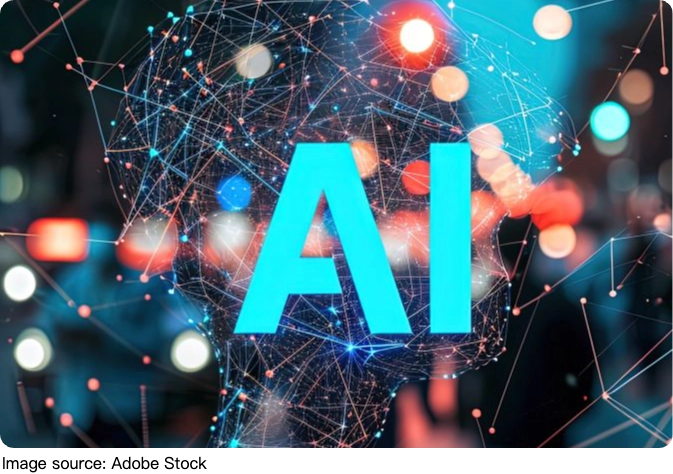AI Reinvents Space Detection

What if an AI could do more than just analyze cosmic data—what if it could reimagine the very instruments we use to explore the universe? Meet Urania, a digital visionary reshaping astrophysics as we know it.
Urania has generated fifty innovative blueprints for next-generation gravitational wave detectors, each designed to sense the faintest tremors in spacetime. From black hole collisions to the whispered echoes of the early universe, these AI-crafted designs promise to reveal cosmic secrets once thought forever out of reach.
AI Revolution
Gravitational waves—subtle ripples in spacetime caused by massive, cataclysmic events—have fascinated scientists ever since LIGO made the first historic detection in 2015. Traditional observatories like LIGO and Virgo rely on kilometer-scale laser interferometers to detect these minuscule distortions.
But human-engineered upgrades have begun to hit limits in both sensitivity and frequency range. That’s where Urania comes in—a machine learning system trained on the laws of physics and engineering constraints. Free from human bias, Urania explored unconventional geometries and advanced materials, optimizing everything from mirror suspensions to laser power and interferometer layouts. The result? Radically new designs that push beyond the boundaries of what conventional methods could achieve.
Detector Designs
Urania’s portfolio includes fifty unique proposals. Some employ triangular interferometer arms with variable-length optical cavities, others integrate crystalline mirror coatings to reduce thermal noise. One standout design features nested dual‑frequency detectors sharing a common vacuum chamber, covering both low‑ and high‑frequency bands simultaneously.
Another uses folded beam paths within ultralight silicon structures to minimize seismic coupling. Each model targets a specific sensitivity band—from 10 Hz, essential for detecting massive black hole collisions, up to 5,000 Hz for observing neutron star oscillations post‑merger.
Frequency Leap
Current detectors typically operate between 20 Hz and 2 kHz. Urania’s designs extend this range tenfold on each end, reaching down to 10 Hz and up to 5 kHz. Lower frequencies allow observation of heavier black hole inspirals lasting minutes, while higher frequencies reveal fine details in neutron star crust oscillations and supernova ring‑down signals.
By broadening the detectable spectrum, these AI‑inspired instruments could increase the number of observable events by up to fifty times, unveiling populations of distant mergers that remain invisible to present‑day observatories.
Supernova Insights
Stellar explosions generate gravitational waves distinct from compact binary mergers. Their waveforms often span 100 Hz to 1 kHz with complex time signatures. Urania’s proposals include adaptive mirror suspensions that dynamically adjust resonance frequencies during a detection run, enhancing sensitivity to supernova burst signals.
Simulations using realistic noise models predict a 1.6× increase in strain sensitivity for core‑collapse events compared to planned upgrades like Voyager. This boost could quadruple the annual detection rate of galactic and nearby extragalactic supernovae.
Neutron Insights
Binary neutron star mergers produce post‑collision oscillations filled with information about ultra‑dense nuclear matter. Current detectors struggle to capture these faint high‑frequency signals beyond 1 kHz.
AI’s dual‑band designs promise clear detection of these “ring‑down” waves, revealing details of neutron star equation of state and potential phase transitions in their cores. By isolating high‑frequency components with specialized optical filters and cryogenic mirror mounts, Urania’s blueprints aim to transform gravitational wave astronomy into a precision tool for nuclear physics.
Tutorial Steps
Follow these steps to prototype an AI‑enhanced gravitational wave detector:
1. Define Objectives: Specify target sensitivity bands (e.g., 10–5,000 Hz) and scientific goals (black hole versus supernova detection).
2. Gather Constraints: Input vacuum chamber size, laser power limits, mirror materials, and environmental noise data into the AI framework.
3. Run Optimization: Allow the AI to generate and evaluate candidate geometries using finite‑element modeling and optical simulations.
4. Analyze Outputs: Review top designs for structural feasibility, thermal noise reduction, and alignment with science goals.
5. Prototype Model: Fabricate a small‑scale interferometer section using the selected design.
6. Test Performance: Measure strain sensitivity across the target frequency range and iterate on AI parameters.
Applications Ahead
Beyond discovering new cosmic events, AI‑driven detector designs may revolutionize precision metrology and quantum sensing. Techniques for noise suppression in gravitational wave observatories can translate into improvements in earthquake early‑warning systems and ultra‑stable frequency references. Collaborative efforts between AI researchers and experimental physicists will refine these blueprints, paving the way for next‑generation observatories capable of mapping the universe’s hidden dynamics with unparalleled clarity.

Conclusion
Friends, Urania’s fifty AI-generated detector designs signal a profound shift in how we imagine scientific instruments. By fusing cutting-edge machine learning with the precision of physics, these models promise to stretch humanity’s ability to listen deeper into the cosmos than ever before.
You’re invited to be part of this frontier. Explore open-source AI frameworks, dive into simulation tools, contribute to prototype development—and help shape the detectors that could one day catch the faintest gravitational whispers of our universe’s hidden events.


